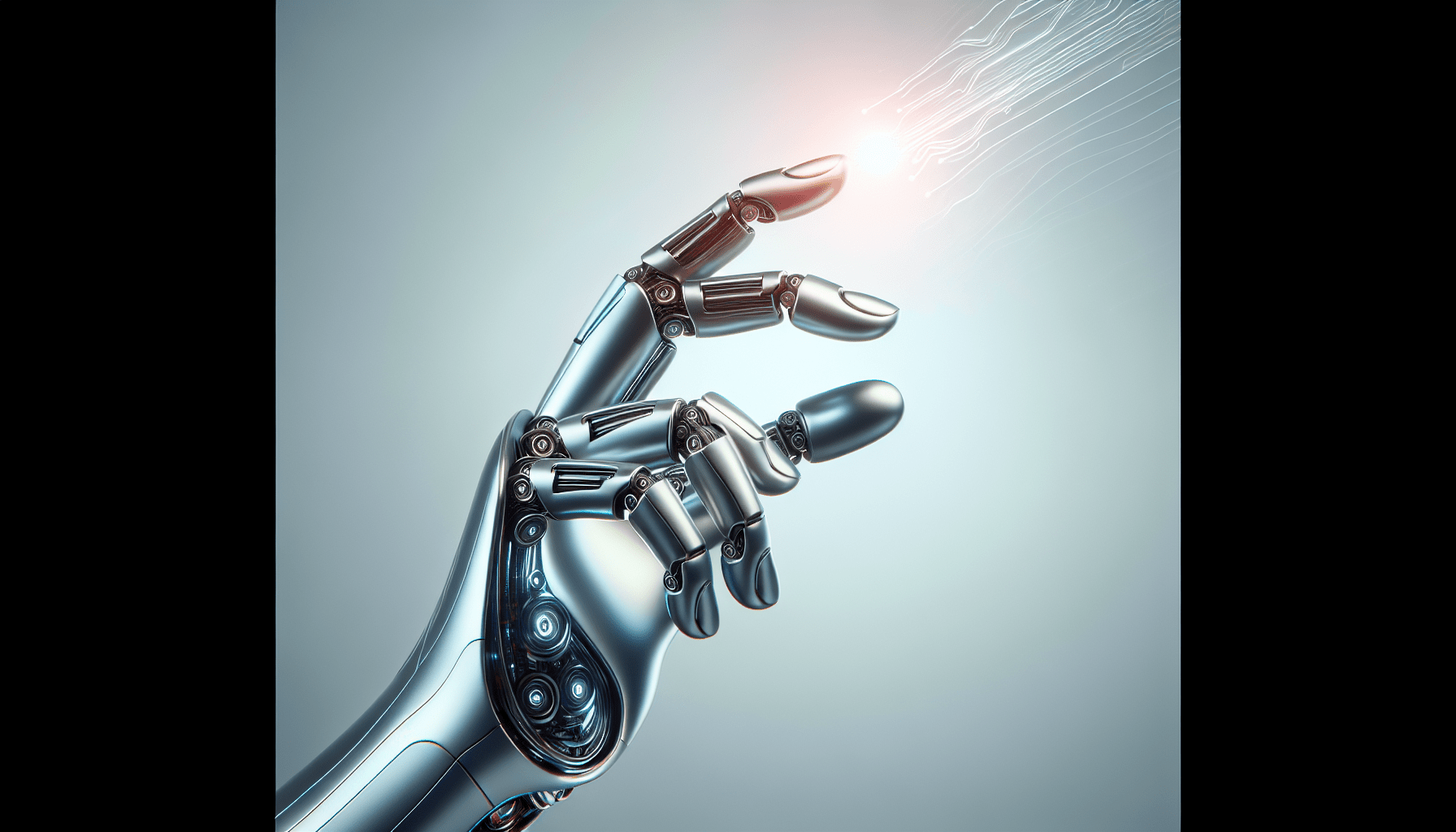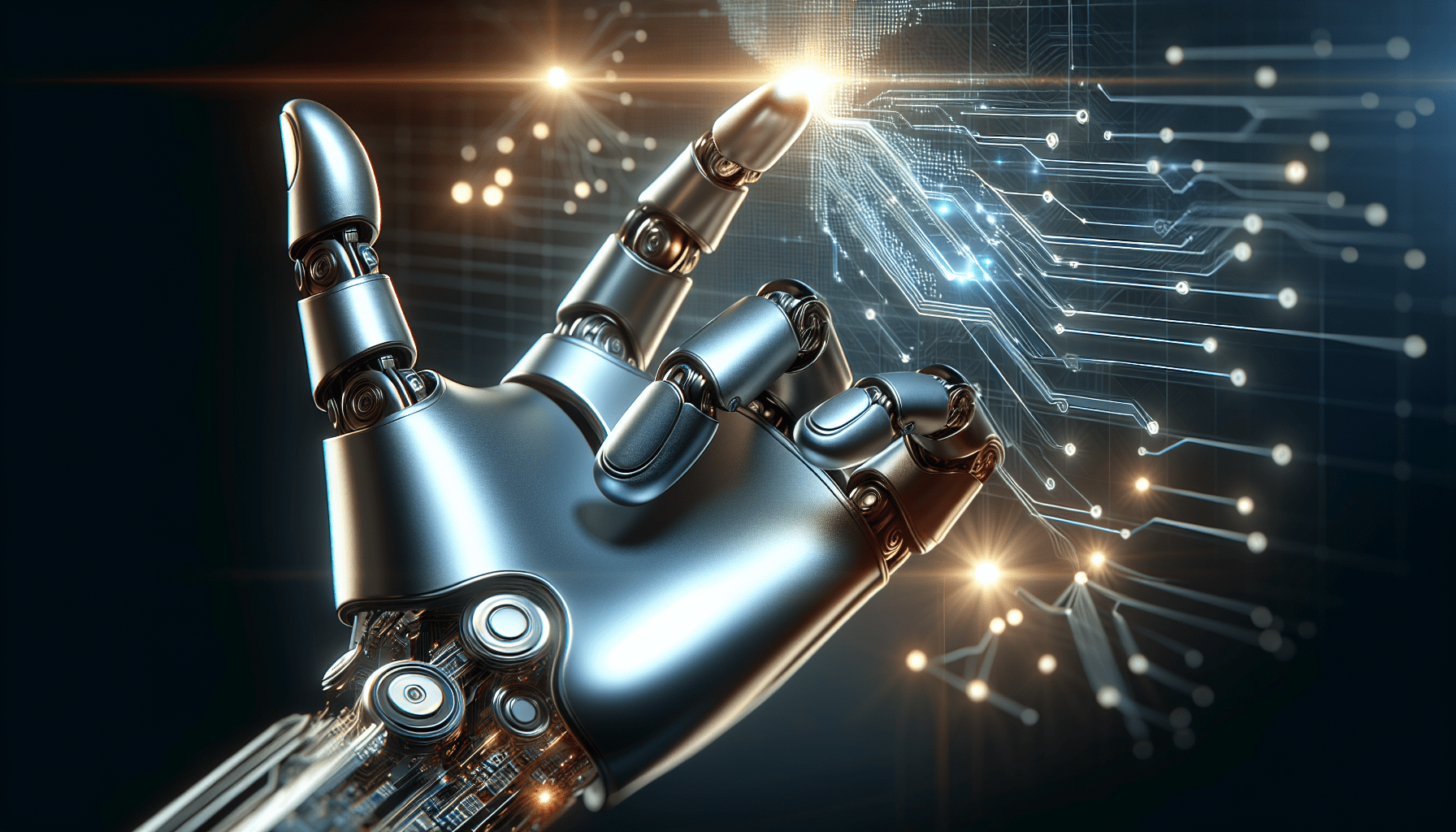Have you ever wondered about the fascinating world of Artificial Intelligence (AI)? Well, look no further! “Unlocking the Power of Artificial Intelligence: A Newbie’s Manual” is here to guide you through the exciting realm of AI, providing all the essential information you need to understand this cutting-edge technology. Whether you’re a curious beginner or someone looking to advance your AI knowledge, this comprehensive manual is your key to unlocking the limitless potential of AI. So, buckle up and get ready to embark on an exhilarating journey as we demystify the complexities of AI and explore its incredible applications in various fields.
Understanding Artificial Intelligence
Artificial Intelligence (AI) is a branch of computer science that simulates human intelligence in machines. It refers to the development of computer systems capable of performing tasks that typically require human intelligence, such as speech recognition, decision-making, problem-solving, and learning. AI is revolutionizing various industries and changing the way we interact with technology. To fully appreciate the potential of AI, it is important to delve into its definition, history, and different types.
Definition of Artificial Intelligence
Artificial Intelligence can be defined as the ability of machines to mimic or imitate human intelligence. It involves creating intelligent machines that can perceive, reason, learn, and adapt to different scenarios. AI encompasses a wide range of techniques and approaches, including machine learning, natural language processing, computer vision, and neural networks. It aims to develop systems that can perform tasks autonomously or with minimal human intervention.

History of Artificial Intelligence
The field of Artificial Intelligence dates back to the 1950s when researchers began exploring the possibility of creating machines that could think and learn like humans. As technology advanced, so did the development of AI. Early breakthroughs include the creation of programs that could play chess and solve complex mathematical problems. In the 21st century, AI has seen exponential growth, with significant advancements in machine learning and deep learning algorithms. Today, AI is a prominent field of research and innovation, driving transformative changes in various industries.
Types of Artificial Intelligence
Artificial Intelligence can be categorized into different types based on its capabilities and functionalities. The two main types of AI are Narrow AI and General AI. Narrow AI, also known as Weak AI, is designed to perform specific tasks or functions, such as speech recognition or image classification. General AI, on the other hand, refers to a hypothetical future system that possesses cognitive abilities similar to human intelligence across a wide range of tasks. While General AI remains a goal for researchers, most of the AI applications we encounter today fall under the category of Narrow AI.

Applications of Artificial Intelligence
Artificial Intelligence has a profound impact across numerous industries, revolutionizing processes, enhancing efficiency, and providing innovative solutions. Here are some notable applications of AI in different sectors:
AI in Healthcare
In the healthcare industry, AI is being utilized to improve diagnostics, patient care, and drug development. AI-powered algorithms can analyze medical images, such as X-rays and MRIs, to detect anomalies or signs of diseases with high accuracy. AI chatbots are also being employed to assist patients in scheduling appointments, answering common medical questions, and providing basic healthcare advice.
AI in Finance
The finance sector benefits from AI’s ability to analyze vast amounts of data and make informed predictions. AI algorithms can detect fraudulent activities, assist in risk assessment, and optimize investment strategies. Robo-advisors, powered by AI, provide automated financial advice based on personalized data analysis, making investing more accessible and efficient.
AI in Manufacturing
AI is transforming the manufacturing industry by automating processes and optimizing productivity. Robots equipped with AI can perform repetitive tasks with precision and speed, reducing the need for human labor. AI-based algorithms can optimize manufacturing workflows, predict equipment failures, and enable predictive maintenance, ensuring minimal downtime.
AI in Agriculture
In agriculture, AI is being used to improve crop yield, monitor soil conditions, and manage pests and diseases. Drones equipped with AI-powered cameras can capture aerial images of fields, helping farmers detect crop health issues early on. AI algorithms can analyze data from various sources, such as weather patterns and soil moisture levels, to provide precise recommendations for irrigation and pest management.
Machine Learning and Deep Learning
Machine Learning (ML) and Deep Learning (DL) are subfields of Artificial Intelligence that focus on enabling machines to learn and improve from experience. While these terms are often used interchangeably, they have distinct characteristics and applications.
Explaining Machine Learning
Machine Learning involves the development of algorithms that enable computers to learn from data and improve their performance without being explicitly programmed. ML algorithms are trained on labeled data, allowing them to recognize patterns and make predictions or decisions based on new, unseen data.
Introduction to Deep Learning
Deep Learning is a subset of Machine Learning that utilizes artificial neural networks to simulate the workings of the human brain. It involves training deep neural networks on vast amounts of data, enabling them to learn complex representations and solve intricate problems. Deep Learning has achieved remarkable breakthroughs in image recognition, natural language processing, and speech recognition.
Difference between Machine Learning and Deep Learning
The primary difference between Machine Learning and Deep Learning lies in the complexity and depth of the neural networks utilized. Machine Learning algorithms generally consist of simpler models, while Deep Learning algorithms employ multiple layers of interconnected neurons, enabling them to learn abstract features and make more accurate predictions. Deep Learning models excel in tasks that involve large amounts of unstructured data, such as image and speech recognition, while Machine Learning algorithms are more suitable for smaller datasets and less complex problems.

Neural Networks
Neural Networks are a fundamental component of Deep Learning and are inspired by the structure and functioning of the human brain. Neural networks consist of interconnected artificial neurons, organized into layers. They process and transform information, enabling machines to recognize patterns, make decisions, and perform complex tasks.
Basic Structure of Neural Networks
Neural networks comprise input layers, hidden layers, and output layers. The input layer receives the initial data, while the hidden layers perform computations and extract features. Finally, the output layer produces the desired results or predictions. The connections between neurons are assigned weights, which are adjusted during the training process to optimize the network’s performance.
Training Neural Networks
Training a neural network involves feeding it with labeled data and adjusting the connections’ weights based on the differences between the predicted and actual outputs. This process, known as backpropagation, enables the network to learn from its mistakes and improve its accuracy over time. The training phase is crucial and requires sufficient and diverse training data to ensure the network’s ability to generalize to unseen data.
Types of Neural Networks
There are various types of neural networks with different architectures and applications. Some common types include Feedforward Neural Networks (FNN), Convolutional Neural Networks (CNN), and Recurrent Neural Networks (RNN). Each type has its unique features and is designed to excel in specific tasks, such as image classification, speech recognition, or sequence prediction.
Natural Language Processing
Natural Language Processing (NLP) is a field of AI that focuses on enabling computers to understand, interpret, and generate human language. NLP allows machines to interact with humans in a natural and human-like manner, opening doors to applications such as chatbots, voice assistants, and language translation.
Introduction to Natural Language Processing
Natural Language Processing involves the development of algorithms and models that can analyze, comprehend, and generate human language. It encompasses tasks such as speech recognition, sentiment analysis, language translation, and question answering. NLP algorithms enable machines to process, interpret, and respond to human language in a meaningful way.
Applications of Natural Language Processing
Natural Language Processing finds applications in various domains. Virtual assistants, such as Siri and Alexa, utilize NLP techniques to understand and respond to voice commands. Sentiment analysis algorithms analyze social media posts and customer reviews to gauge public opinion or extract meaningful insights. Language translation tools, like Google Translate, use NLP algorithms to convert text from one language to another accurately.
Challenges in Natural Language Processing
Despite significant advancements, NLP still faces challenges due to the complexity and nuances of human language. Ambiguity, context, and cultural variations pose hurdles in accurately interpreting meaning. Additionally, understanding sarcasm, slang, and implicit information remains challenging for machines. Researchers continually strive to enhance NLP algorithms to overcome these obstacles and enable machines to understand and communicate more effectively with humans.

Computer Vision
Computer Vision is an AI field dedicated to enabling machines to see, interpret, and understand visual information. It involves developing algorithms and models that can analyze images and videos, detect objects, and extract meaningful insights. Computer Vision has a wide range of applications across various industries.
Overview of Computer Vision
Computer Vision algorithms analyze images and videos to extract features, recognize objects, and understand visual content. By utilizing techniques such as image segmentation, object detection, and image classification, machines can identify and interpret visual information. Computer Vision enables applications such as facial recognition, autonomous vehicles, and augmented reality.
Applications of Computer Vision
Computer Vision plays a critical role in numerous sectors. Facial recognition technology, powered by Computer Vision algorithms, enables secure access control, biometric identification, and surveillance systems. Autonomous vehicles rely on Computer Vision to perceive the surrounding environment and make real-time decisions. Augmented reality applications overlay digital information onto real-world visuals, enhancing user experiences in various domains, such as gaming and education.
Challenges in Computer Vision
Computer Vision faces challenges related to image quality, occlusion, and variations in lighting conditions. Noisy or low-resolution images can affect object recognition accuracy. Occlusion, where objects are partially hidden or obscured, poses difficulties in accurate detection and tracking. Furthermore, variations in lighting, shadowing, and viewpoint can affect the performance of Computer Vision algorithms. Researchers are constantly striving to develop robust Computer Vision models that can address these challenges and improve visual perception capabilities.
AI Ethics and Implications
As Artificial Intelligence becomes increasingly integrated into our lives, it is essential to consider the ethical implications and potential impacts on society. Here are some key aspects to consider:
Ethical Considerations in AI
AI raises ethical concerns regarding privacy, transparency, and bias. The collection and utilization of personal data in AI systems raise privacy concerns, necessitating robust data protection and security measures. Transparency is vital, as AI systems should provide clear explanations for their decisions and actions. Bias in AI algorithms can perpetuate discrimination or reinforce existing societal inequalities, highlighting the need for fairness and accountability in AI development and implementation.
Potential Impacts of AI on Society
The widespread adoption of AI has the potential to transform various aspects of society, including employment, healthcare, and education. While AI can automate mundane tasks, improving efficiency and productivity, it raises concerns about job displacement and the future of work. In healthcare, AI-powered systems can enhance diagnostics and personalized medicine, but ethical considerations regarding patient privacy and decision-making must be addressed. In education, AI can enable personalized learning experiences, but equitable access to AI tools and the potential for surveillance must be carefully navigated.
AI Bias and Fairness
AI systems are trained on vast amounts of data, and if the data contains biases, the AI algorithms can perpetuate those biases. For example, biased hiring algorithms can result in discriminatory practices. Efforts must be made to ensure AI systems are fair and unbiased, by diversifying training data, implementing guidelines, and conducting regular audits. Fairness in AI is crucial to prevent perpetuating societal biases and inequalities.

Getting Started with AI
For those interested in diving into the field of AI, here are some essential building blocks, learning resources, and tools to get started:
Building Blocks of AI
To understand AI, foundational knowledge in mathematics, statistics, and computer science is essential. Concepts such as linear algebra, probability, and algorithms form the building blocks of AI. Familiarity with programming languages like Python is also advantageous, as many AI frameworks and libraries are Python-based.
Learning Resources for AI
Numerous online courses, tutorials, and books provide comprehensive learning resources for AI enthusiasts. Platforms like Coursera, Udacity, and edX offer AI courses at various skill levels. The book “Artificial Intelligence: A Modern Approach” by Stuart Russell and Peter Norvig is an excellent resource for understanding AI algorithms and concepts.
Tools and Frameworks for AI Development
Several tools and frameworks simplify AI development and experimentation. TensorFlow and PyTorch are popular open-source libraries for deep learning, providing a range of pre-built models and efficient computation capabilities. Software platforms like Google Cloud AI, Microsoft Azure AI, and Amazon AI Services offer cloud-based AI tools and services, making AI development accessible.
Future of Artificial Intelligence
Artificial Intelligence continues to evolve and is set to shape the future in countless ways. Here are some emerging trends and potential advancements to look forward to:
Emerging Trends in AI
The future of AI will witness advancements in areas like explainable AI, federated learning, and edge computing. Explainable AI aims to develop models that can provide clear explanations for their decisions, improving transparency and trust. Federated learning enables training AI models on decentralized data, preserving privacy while maintaining model accuracy. Edge computing brings AI capabilities directly to devices, reducing reliance on cloud-based processing and enabling real-time on-device AI.
Potential Advancements in AI Technologies
Advancements in AI technologies hold immense potential, including breakthroughs in quantum computing, reinforcement learning, and natural language understanding. Quantum computing can exponentially increase computational power, enabling AI systems to process complex tasks at an unprecedented scale. Reinforcement learning algorithms, combined with simulation environments, can accelerate the development of intelligent systems capable of learning through trial and error. Natural language understanding can evolve further, enabling machines to comprehend context, emotions, and even engage in meaningful conversations.
Impact of AI on Future Workforce
AI’s impact on the future workforce is a topic of considerable discussion. While AI may automate certain tasks, it is expected to create new opportunities and jobs. As AI takes care of routine and mundane tasks, humans can focus on more creative and complex aspects of work, emphasizing critical thinking, problem-solving, and soft skills. To prepare for the future workforce, fostering an understanding of AI concepts and adopting a lifelong learning mindset will be crucial.
Conclusion
Artificial Intelligence is an exciting and constantly evolving field that has the potential to revolutionize various industries and reshape the way we live and work. Understanding AI’s definition, history, and types is crucial to grasp its potential impact. Exploring machine learning, deep learning, neural networks, natural language processing, and computer vision reveals the diverse applications and challenges within AI. Considering the ethical implications, learning resources, and available tools helps individuals embark on their AI journey. With emerging trends and potential advancements on the horizon, the future of Artificial Intelligence promises exciting possibilities and transformative advancements.






Leave a Reply